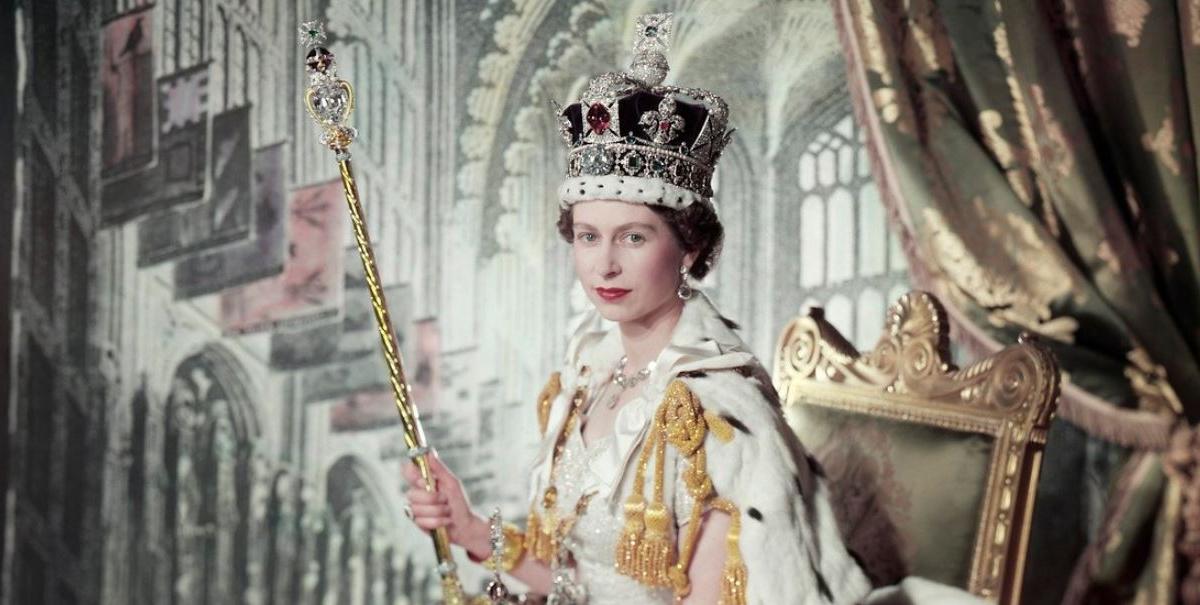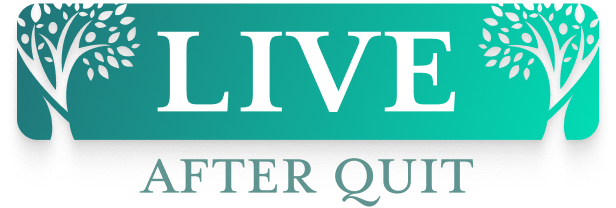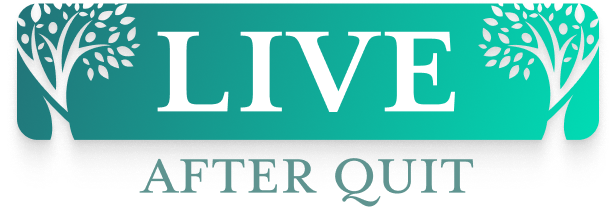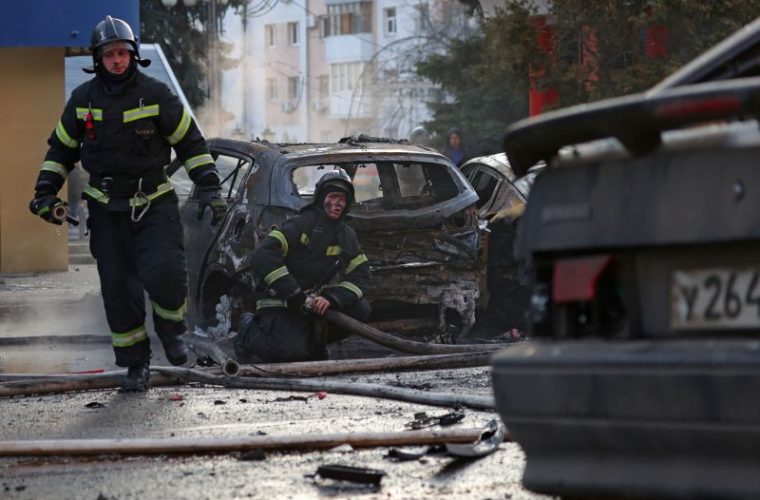
How Monarchs Became Servants of the State
European monarchs come and go, but the American media—no doubt largely due to the fact the British speak and write in English—follows the British monarchy more closely than others. American pundits didn’t have much to say when King Juan Carlos of Spain abdicated in 2014 in the wake of an embezzlement scandal. But, it’s only been a few hours since the death of Queen Elizabeth II, and the speculation about the future of the British monarchy is already plentiful. Hayes Brown at MSNBC writes this week, for example, on how Elizabeth held together a declining institution, but “It is entirely probable that [new King Charles III] and his likely successor, Prince William, will oversee the unraveling of the monarchy itself.”
We shall see.
But in one respect Brown is undeniably right when he says: “the wheels of the state will continue turning without her.” Of course they will. In the modern world, none of the monarchs of Europe are critical institutions within the regimes over which they ostensibly “reign.”
Indeed, the mere fact that we refer to “the state” as something distinct from a monarch at all illustrates a crucial fact about the relationship between monarchs and the state in the modern world: states have surpassed and replaced the monarchs as the true source of legal and military power power within their respective territories. Moderns states have subsequently expanded this power far beyond what even the most ambitious monarchs of centuries past dreamed about. There is an irony here, however. In Europe, it was the monarchs themselves who built up law courts and military institutions into the immense states that we know today. In the process, though, the monarchs lost control of these increasingly unwieldy and bureaucratic institutions. Eventually, the monarchs grew to become appendages of the state, rather than the other way around, as the monarchs had originally intended. This all occurred even before the advent of democratic states. By the nineteenth century, the old model of private dynastic rule had been overturned by the machinery of states, both democratic and not.
Monarchy Before the State
Certainly, the monarchies of today should not be confused with the monarchies that existed before the state rose to prominence in the sixteenth and seventeenth centuries.
The pre-state monarchs, after all, were essentially private land owners whose income depended largely on rents collected from the monarch’s private estates. These rents were not necessarily collected in the form of money, and money was often scarce. But these landowners nonetheless collected resources—in the form of crops, military service, or other in-kind payments—from those who used the owners’ lands. In this environment, however, there was no “sovereign” institution that exercised a monopoly on the means of coercion, and the system was essentially a system of private law. It was, as John Strayer put it a system of, “public power in private hands, and a military system in which an essential part of the armed forces is secured through private contracts.” These contracts came down to, as Hendrik Spruyt describes it “rule by personal bonds.” Agreements to provide military service, for example, were a matter of promises made to specific individuals. If those individuals died, the contracts became null and void.
Ruling dynasties were not permanent impersonal state institutions but networks held together by family ties and one-on-one relationships. The territories over which they claimed some share of ownership changed frequently. There was no sense of a territorial nation. The kings who ruled them very often tended to business personally. These kings personally sat in law courts deciding cases. They personally led military campaigns to secure their property from others.
When a king’s responsibilities and lands became too numerous to address personally, this could be dealt with through agreements, oaths, and contracts with other princes in a complex web of vassalage known as feudalism. This kept things local and dependent on decentralized cooperation and negotiation. But, again, this did not give monarchs an indisputable monopoly within their lands. Many powerful kings were vassals to other kings and princes. This naturally limited the power of kings and prevented them from exercising what we would today call state prerogatives.
The Rise of the State
By the late Middle Ages, however, some of these princes became wealthy enough to dispense with the need for inconvenient quid-pro-quo agreements with other princes. Increasing food surpluses and the growing availability of specie meant wealthier kings and princes could directly pay for both soldiers and other military supplies. Local nobles could be bought off. Paid tax agents—directly loyal to the king—could be sent out to collect revenue. Warfare also became more expensive, meaning the most wealthy princes and kings became comparatively more effective at subjugating less wealthy competitors. Kings began to consolidate more lands and more power.
This changed the game considerably. As kings became more wealthy, their wealth maintained a growing population of clerks, soldiers, judges, and officials who directly depended on the king for income. These paid bureaucrats became so numerous that kings had to give positions even to many people outside the monarchy’s inner circles. Now there was a new class of people who depended on the king for revenue, but who nonetheless had their own interests, their own families, and their own agendas.
This posed a danger to the monarchs themselves. The king had granted these agents of the nascent state some share of power. What if they used this power to promote their own goals and favorites? These people could potentially cripple the king’s ability to collect revenue, raise armies, or impose “law and order.” Indeed, by the 1640s, some of the Spanish monarch’s supporters feared that Spain’s growing bureaucracy might end up “rendering the king himself superfluous.”
Yet, the monarchs pushed ahead anyway. By the seventeenth century, monarchs were raising immense standing armies and building enormous military installations capable of withstanding the new weaponry powered by gun powder. The days of personally leading armies were long gone. As J.H. Elliott has noted, the central importance of this new bureaucracy is perhaps well illustrated by the evolution of monarchs from men who rode on horseback into battle into men who, like Spain’s Phillip II “spent his working day at this desk surrounded by piles of documents.”
A growing state meant a growing pile of paperwork to manage it. But, eventually, the state would overwhelm the monarchs themselves. According to Martin Van Creveld, by the end of the fifteenth century, rulers and their subjects were already becoming aware of the idea that there was a machinery within the state that was separate from the monarch. A new vocabulary arose: phrases such as “the crown,” “the state,” and “the commonwealth” came to represent something the king didn’t rule over so much as serve. Kings were no longer permitted to simply tend to their own private estates. This was, as Spruyt puts it, “the qualitative shift from personal rule to public authority.” Put another way, we might describe this as a shift from private landowner to state agent.
The Monarchs Are Absorbed by the State
By the end of the eighteenth century, Van Creveld notes, the state was “no longer identical with the person of the ruler… Having grown out of the instruments that had helped monarchs turn themselves into absolute rulers, the state acquired a life of its own.”
Not coincidentally, this perhaps became most obvious in the kingdoms with the strongest states of that period: England and France. In England for instance, the revolutionaries of the English Civil War not only cut off the king’s head, they abolished the monarchy altogether. This was done not as a mob operation, but with the consent of the representatives of the English state in Parliament. In other words, the Parliamentarians made it abundantly clear that it’s “the people”—which Parliament claimed to represent—who defined the “the commonwealth.” The king’s role was simply to offer certain services. Eventually, Parliament restored the monarchy, but the lesson was learned. In 1688, Parliament again intervened to replace one king with another more to Parliament’s liking.
In France, the revolutionaries expanded on the same theme. Decades earlier, King Louis XIV had spent many years laboring to create Europe’s largest, wealthiest, and most powerful state. Then the instruments of that state were turned against Louis’s own dynasty. Louis said more than he knew when on his death bed he mused: “I depart, but the state shall always remain.” Louis’s great-great-great grandson Louis XVI could have said the same thing on the gallows.
After these crises in it was abundantly clear that neither England nor the English state was the property of the king or his dynasty. The same was clear for the remnants of the monarchy in France. Indeed, monarchies throughout Europe were finding themselves in similar situations. This occurred decades before these monarchs were replaced by democratic republican regimes. By then, kingly rule had been already replaced in all but name by state regimes of various types. Today, many states of Europe tolerate institutional monarchies. The men and women of these institutions are now frequently cheerleaders in times of war. Or, they can be used to overtly support the state against its enemies, such as when King Felipe of Spain intervened to condemn Catalan secessionists. Nationalists often laud monarchs as symbols of “national unity.” In this we find no trace of what monarchs imagined themselves to be in the days of dynastic rule. That disappeared centuries ago.




